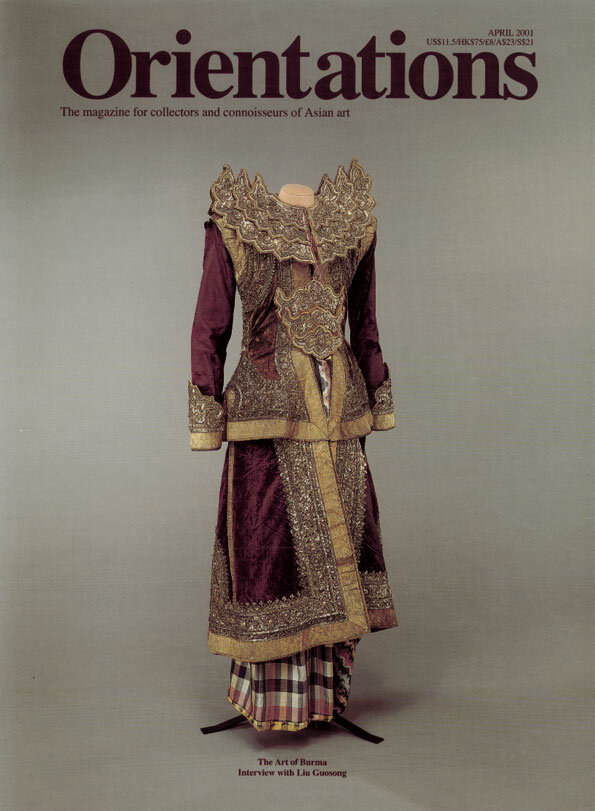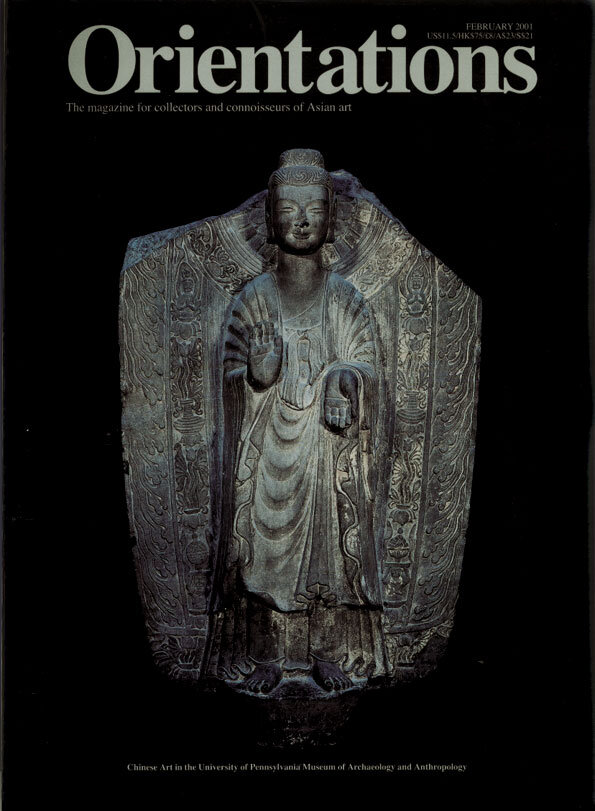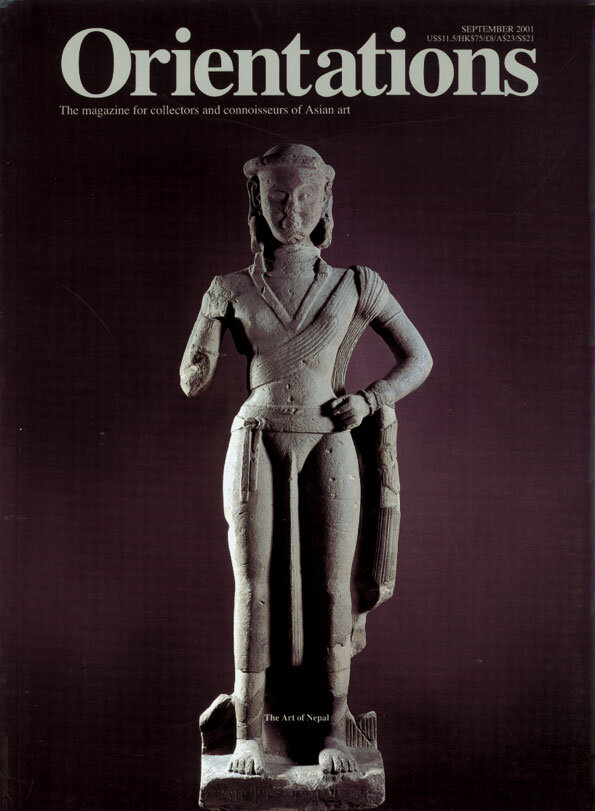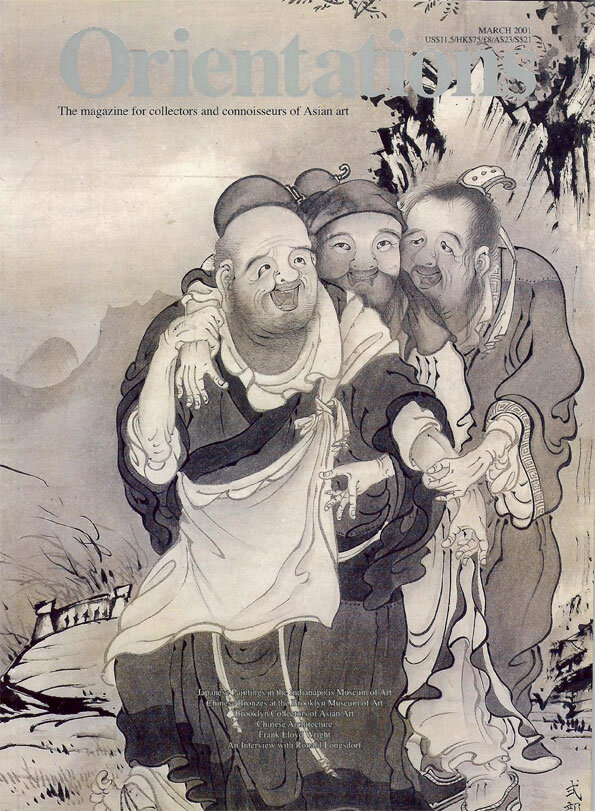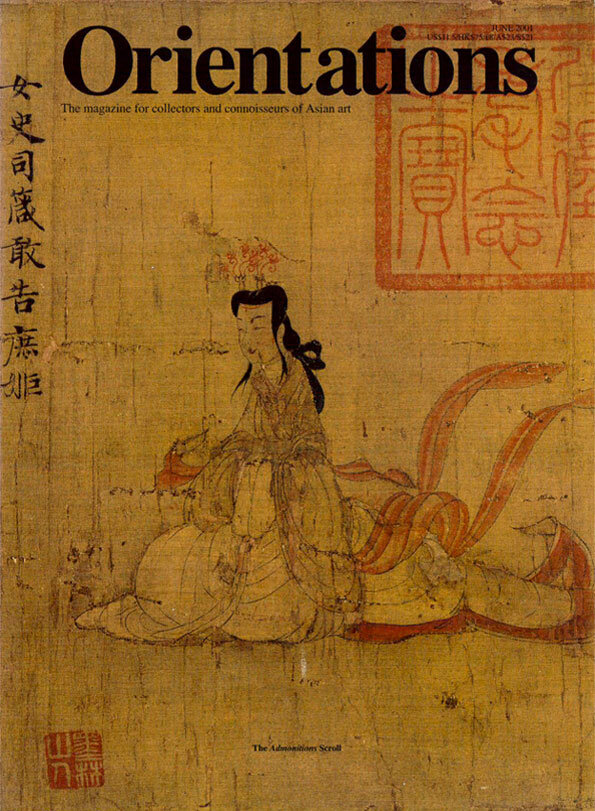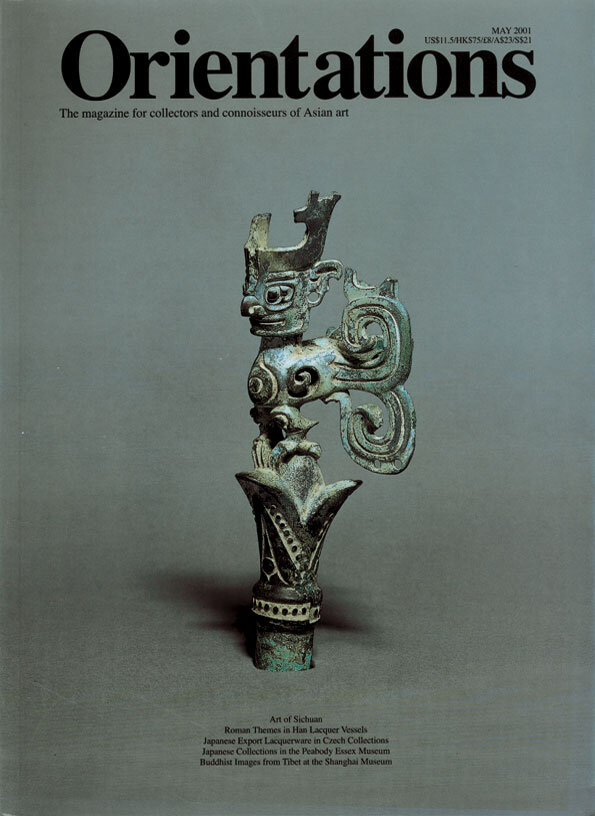APR 2001
VOLUME 32 - NUMBER 4
Due to the country's self-imposed isolation in the post-colonial period, the art of Burma has been largely overlooked by recent scholarship. With encouraging signs that the ruling generals are considering a more liberal course by releasing political prisoners and entering into a dialogue with Aung San Suu Kyi, the leader of the democratic movement, the articles in this issue are a timely recognition of Burma’s artistic achievements.
Pamela Gutman examines the origin and impact of external cultural influences on the art and architecture of Arakan. Robert L. Brown discusses the significant of intermarriage and female dress codes in the courts of inland principalities in Southeast Asia. To interpret Burmese art of the modern era, Donald M. Stadtner explores the mix of diverse cultural currents in Burma during the 18th and 19th centuries. Myo Thant Tyn and Dawn F. Rooney’s appraisal of recently discovered 14th and 16th century celadons indicates that Burma played an active part in the celebrated ceramic tradition of Southeast Asia.
In 1989 the military government of Burma changed the name of the country to Myanmar. However, for political and cultural reasons, the former is favoured by the country’s democracy movement, and as Burma is the name more universally acknowledged, we have retained its use in all but one of the articles.
This month’s interview features Taiwan-based Liu Guosong, who creates a harmony of past and present, East and West in his abstract landscapes.
FEATURES
Deborah Klimburg-Salter, Marianne Yaldiz and James Cuno. Bamiyan: Culture Under Attack
Joan Stanley-Baker. Liu Guosong on His Role in Twentieth Century Art
Gideon Shelach. Prehistoric Dragons from Northeast China
Myo Thant Tyn and Dawn F. Rooney. Ancient Celadon in Myanmar: A New Ceramic Discovery
Donald M. Stadtner. Burma on the Eve of the Modern Era
Susan Conway. Power Dressing: Female Court Dress and Marital Alliances in Lan Na, the Shan States and Siam
Robert L. Brown. Pyu Art: Looking East and West
Pamela Gutman. Between India and Southeast Asia: Arakan, Burma's Forgotten Kingdom
PREVIEWS & REVIEWS
David Weldon. Exhibition Review: 'Art Treasures from the Land of Snows: Selections from the Tibet House Repatriation Collection', Tibet House US, New York
COMMENTARY
Claudine Bautze-Picron. Commentary: From 'Late 20th Century' to '11th-12th Century': The Faking of Burmese Art History
VOLUME 32 - NUMBER 4
Due to the country's self-imposed isolation in the post-colonial period, the art of Burma has been largely overlooked by recent scholarship. With encouraging signs that the ruling generals are considering a more liberal course by releasing political prisoners and entering into a dialogue with Aung San Suu Kyi, the leader of the democratic movement, the articles in this issue are a timely recognition of Burma’s artistic achievements.
Pamela Gutman examines the origin and impact of external cultural influences on the art and architecture of Arakan. Robert L. Brown discusses the significant of intermarriage and female dress codes in the courts of inland principalities in Southeast Asia. To interpret Burmese art of the modern era, Donald M. Stadtner explores the mix of diverse cultural currents in Burma during the 18th and 19th centuries. Myo Thant Tyn and Dawn F. Rooney’s appraisal of recently discovered 14th and 16th century celadons indicates that Burma played an active part in the celebrated ceramic tradition of Southeast Asia.
In 1989 the military government of Burma changed the name of the country to Myanmar. However, for political and cultural reasons, the former is favoured by the country’s democracy movement, and as Burma is the name more universally acknowledged, we have retained its use in all but one of the articles.
This month’s interview features Taiwan-based Liu Guosong, who creates a harmony of past and present, East and West in his abstract landscapes.
FEATURES
Deborah Klimburg-Salter, Marianne Yaldiz and James Cuno. Bamiyan: Culture Under Attack
Joan Stanley-Baker. Liu Guosong on His Role in Twentieth Century Art
Gideon Shelach. Prehistoric Dragons from Northeast China
Myo Thant Tyn and Dawn F. Rooney. Ancient Celadon in Myanmar: A New Ceramic Discovery
Donald M. Stadtner. Burma on the Eve of the Modern Era
Susan Conway. Power Dressing: Female Court Dress and Marital Alliances in Lan Na, the Shan States and Siam
Robert L. Brown. Pyu Art: Looking East and West
Pamela Gutman. Between India and Southeast Asia: Arakan, Burma's Forgotten Kingdom
PREVIEWS & REVIEWS
David Weldon. Exhibition Review: 'Art Treasures from the Land of Snows: Selections from the Tibet House Repatriation Collection', Tibet House US, New York
COMMENTARY
Claudine Bautze-Picron. Commentary: From 'Late 20th Century' to '11th-12th Century': The Faking of Burmese Art History
VOLUME 32 - NUMBER 4
Due to the country's self-imposed isolation in the post-colonial period, the art of Burma has been largely overlooked by recent scholarship. With encouraging signs that the ruling generals are considering a more liberal course by releasing political prisoners and entering into a dialogue with Aung San Suu Kyi, the leader of the democratic movement, the articles in this issue are a timely recognition of Burma’s artistic achievements.
Pamela Gutman examines the origin and impact of external cultural influences on the art and architecture of Arakan. Robert L. Brown discusses the significant of intermarriage and female dress codes in the courts of inland principalities in Southeast Asia. To interpret Burmese art of the modern era, Donald M. Stadtner explores the mix of diverse cultural currents in Burma during the 18th and 19th centuries. Myo Thant Tyn and Dawn F. Rooney’s appraisal of recently discovered 14th and 16th century celadons indicates that Burma played an active part in the celebrated ceramic tradition of Southeast Asia.
In 1989 the military government of Burma changed the name of the country to Myanmar. However, for political and cultural reasons, the former is favoured by the country’s democracy movement, and as Burma is the name more universally acknowledged, we have retained its use in all but one of the articles.
This month’s interview features Taiwan-based Liu Guosong, who creates a harmony of past and present, East and West in his abstract landscapes.
FEATURES
Deborah Klimburg-Salter, Marianne Yaldiz and James Cuno. Bamiyan: Culture Under Attack
Joan Stanley-Baker. Liu Guosong on His Role in Twentieth Century Art
Gideon Shelach. Prehistoric Dragons from Northeast China
Myo Thant Tyn and Dawn F. Rooney. Ancient Celadon in Myanmar: A New Ceramic Discovery
Donald M. Stadtner. Burma on the Eve of the Modern Era
Susan Conway. Power Dressing: Female Court Dress and Marital Alliances in Lan Na, the Shan States and Siam
Robert L. Brown. Pyu Art: Looking East and West
Pamela Gutman. Between India and Southeast Asia: Arakan, Burma's Forgotten Kingdom
PREVIEWS & REVIEWS
David Weldon. Exhibition Review: 'Art Treasures from the Land of Snows: Selections from the Tibet House Repatriation Collection', Tibet House US, New York
COMMENTARY
Claudine Bautze-Picron. Commentary: From 'Late 20th Century' to '11th-12th Century': The Faking of Burmese Art History

